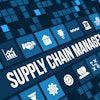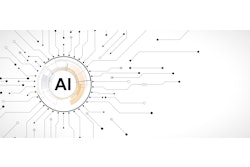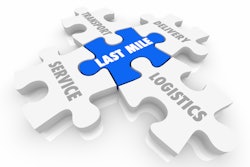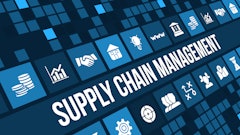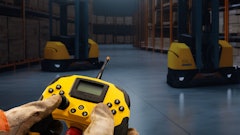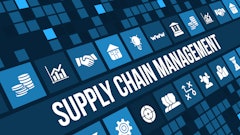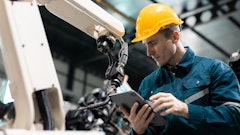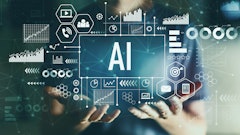
Too often, resilience is framed as a construction project: build more warehouses, build new systems, build “resilient networks” from scratch. But the most resilient companies aren’t the ones with the largest footprint or the newest tech. They’re the ones with the clearest visibility into their data and the discipline to measure the impact of every decision before a disruption forces their hand.
That shift from building to measuring is how supply chains move from surviving disruption to thriving because of it.
Resilience doesn’t require a hard hat
Manufacturers and distributors have spent the past five years reacting to one disruption after another: pandemics, tariffs, geopolitical instability, labor shortages, the list goes on. The reaction instinct is to build something new: new facilities, new safety stock, new systems. But resilience isn’t about pouring concrete.
In fact, there’s already plenty of manufacturing and distribution space available in North America. What most organizations lack is not physical capacity but the ability to evaluate trade-offs. Tariffs, transportation costs, order size, SKU profiles, labor availability, all of these variables have bottom line impacts on network design and operating performance. And the best part is that all of them can be directly measured.
When leaders view resilience as measurement, not construction, they stop thinking in terms of static capacity and start thinking in terms of flexibility. That’s where competitive separation happens.
Why nimble beats strong
Flexibility is more than a risk response. It’s a competitive weapon. When disruptions hit, the companies that can shift networks, consolidate facilities, or reroute orders without missing a beat are the ones that leave competitors behind.
Manufacturers run “what if” scenarios to evaluate whether consolidating facilities would lower transportation costs, or how adjusting order profiles would impact labor and material handling. Each change cascades into new outcomes for cost, speed and service. By modeling those outcomes before disruption hits, companies gain the confidence to act decisively when conditions change.
Flexibility, measured through data, is what turns resilience into a differentiator instead of just a defensive posture.
Duties and data
For decades, tariffs were stable enough that companies didn’t bother modeling them. That stability is gone. Tariffs are now targeted to specific regions, items and industries. That means companies can’t afford to be reactive. They have to know in advance which products, suppliers and customers are most exposed.
Resilience here is about understanding the data. What codes are most impacted? What customers or orders will feel the effect first? What scenarios can minimize that impact? Leaders who measure tariff risk and plan for it now can shift sourcing or distribution strategies before disruptions hit their bottom line.
The takeaway is simple: in today’s supply chain environment, tariffs aren’t a background cost. They’re a strategic variable that must be measured like any other.
Faster than humanly possible: AI and agents
The challenge is that supply chains involve thousands of variables, from inbound appointments and labor schedules to SKU slotting and transportation modes. Humans can’t measure them all at the speed required. That’s where AI (especially agent-based AI) comes in.
AI agents excel at tasks that consume hours of human analysis. They can instantly evaluate inbound appointments against labor availability or analyze slotting data to optimize warehouse space. Telematics data from trucks, IoT sensors from equipment and order data from ERP systems can all feed into a data platform where agents continuously evaluate scenarios.
The point isn’t that AI “builds” resilience. It’s that AI measures at a scale and speed humans can’t match. That allows leaders to base decisions on facts, not instincts, and to adapt faster than competitors when disruptions arise.
Automation as a flexible asset
If AI is the brain of resilience, automation and robotics are the muscles. But here again, measurement matters more than construction. Robotics is often high on the hype cycle, but its value depends on context.
Repetitive tasks like packing, taping or simple pick-and-place are where robotics delivers clear ROI. More complex actions still lag behind in cost-effectiveness and flexibility. The key is to evaluate robotics not as fixed infrastructure, but as flexible assets. If tariffs or reshoring expand domestic manufacturing footprints, automation must be redeployable to keep pace with changing order profiles and labor dynamics.
As labor costs rise, the ROI calculus for robotics shifts. Labor rates, throughput, downtime and automation capacity are the deciding factors in whether robotics adds resilience or simply creates a new choke point.
Forget hard hats. Grab a dashboard.
The future of resilient supply chains isn’t about pouring concrete, stacking robots or scrambling after the next disruption. It’s about knowing the numbers.
Measure how tariffs hit your highest-value products. Measure the ripple effects of network changes before they cost you. Measure how labor, automation and AI agents flex together to shape throughput and cost.
Strategy comes first; tech is the amplifier. Buildings, bots and big spends can’t make you resilient. Metrics can.
The companies that are thriving under current uncertainty aren’t the ones that built the most. They’re the ones that measured the best.




